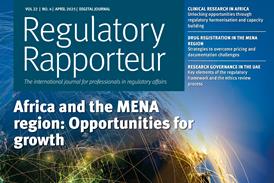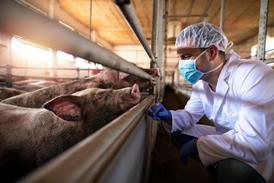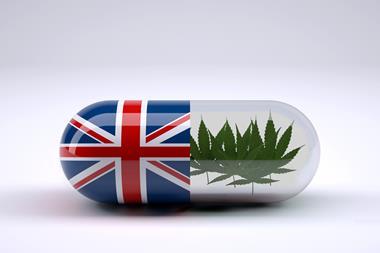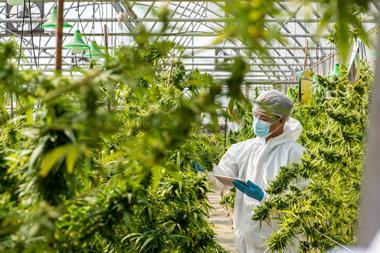Second in a four part series considering uses of medicinal cannabis
Recent history
In the mid-1990s, in response to patient demand, citizens in several US states passed votes that legalised the medical use of cannabis for people with a variety of illnesses, such as chronic pain, terminal cancer and multiple sclerosis.
Subsequently, a similar approach was adopted in many other US states. In 1999, Canada introduced a medical cannabis programme that expanded over the subsequent decades in response to court decisions.
In the early 2000s, Israel (2001) and the Netherlands (2003), and later other countries, such as Switzerland (2011), Czech Republic (2013), Australia (2016) and Germany (2017), legislated to allow the medical use of cannabis under specified conditions.

Over a similar period, clinical trials have provided the basis for granting an authorisation for marketing in many EU Member States of a medicinal product, primarily based on cannabis extracts, that has proven effective in the treatment of muscle spasticity due to multiple sclerosis.
Sativex (nabiximols) is the first cannabis-based medicine to be licensed in the UK. It is a synthetic 50-50 mix of THC and CBD. The drug is indicated for the treatment of MS-related spasticity when a person has shown inadequate response to other symptomatic treatments or found their side effects intolerable. Sativex can be used in addition to a person’s current anti-spasticity medication.
Most EU countries now allow, or are considering allowing, the medical use of cannabis or cannabinoids in some form. However, the approaches taken vary widely in terms of both the products allowed and the regulatory frameworks governing their provision.
Legislation internationally
Cannabis and cannabis resin are listed in Schedules I and IV of the United Nations 1961 Single Convention on Narcotic Drugs (“the Convention”).
In Article 1, Paragraph 1, of the Convention, cannabis is defined as: ‘The flowering or fruiting tops of the cannabis plant (excluding the seeds and leaves when not accompanied by the tops) from which the resin has not been extracted, by whatever name they may be designated.’
Cannabis resin is defined as: ‘The separated resin, whether crude or purified, obtained from the cannabis plant.’
Along with a number of its isomers and stereochemical variants, Δ9-THC is listed in Schedule I of the United Nations 1971 Convention on Psychotropic Substances.
Under the Convention production, manufacturing, possession, and trade of controlled drugs is limited exclusively for medical and scientific purposes. The production and distribution of controlled substances must be licensed and supervised.
Therefore, international governments are required to provide estimates and statistical returns to the International Narcotics Control Board (INCB) on the quantities of controlled substances that are required, manufactured, and utilised.
Each country has been granted a set amount of the narcotic drug that can be imported and/or produced on an annual basis. The INCB can request information on the planned medical purposes, including information on the numbers of patients treated, along with the method of administration of the cannabis.
INCB measures ensure that the supply of cannabis for medical and scientific purposes are met and no exceeded.
Legislation in the EU
The EU Cosmetics Regulation EC No. 1223/2009, Annex II prohibits ‘Narcotics, natural and synthetic: All substances listed in Tables I and II of the single Convention on narcotic drugs signed in New York on 30 March 1961’ (Reference 306); this includes cannabis.
However, the Single Convention uses a definition of cannabis limited to “the flowering or fruiting tops of the cannabis plant” and excludes the seeds and leaves of the plant when not accompanied by the tops.
In view of this, CBD may be used in cosmetics placed on the EU market when obtained from cannabis, cannabis resin, cannabis extracts and cannabis tinctures originating from the seeds and leaves that are not accompanied with the fruiting tops of the cannabis plant. Nonetheless, the general legal requirements for cosmetic products, including those relating to safety are applicable.
Legislation in the UK
In the UK, cannabis, cannabis resin, cannabinol and cannabinol derivatives are classified as a Class B drugs under the Misuse of Drugs Act 1971. The Misuse of Drugs Regulations 2001 (‘the 2001 Regulations’) provides the legal framework for access to controlled drugs for legitimate purposes.
The cultivation (irrespective of THC content and/or medicinal purpose), production, supply and possession of cannabis is only permitted under a Home Office licence.
Post-Brexit, EU law was signed into UK law and still applies.
CBD is available as a food supplement mainly in the form of cannabis oil, in the UK. In 2019, the European Commission listed CBD as a ‘novel food’ in the EU novel foods catalogue.
Novel foods are defined as foods that do not have a history of consumption in the EU before May 1997. Before a novel food can be legally sold in the EU, it is required to have a pre-market safety assessment and authorisation under the Novel Foods Regulation (EU) No 2015/2283).
The next article in this series highlights the regulatory background — read it here.
Reproduced with the kind permission of Woodley BioReg — the views expressed in this article are those of the authors and do not represent those of Regulatory Rapporteur or TOPRA.

























